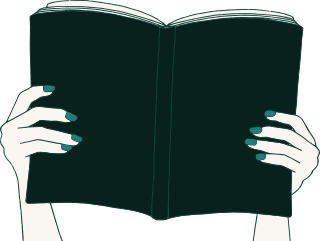Digital techniques haven’t been put to use that often in studies revolving around children’s literature. They do, however, allow for large-scale research possibilities concerning book collections, and they can reveal unexpected patterns. Take for example the analysis of Guus Kuijer’s oeuvre. His novels, and more specifically his novels for children, contain a striking number of explicit reflections and generalisations regarding age. The child characters in Kuijer’s books often judge behaviour that is ‘childish’: they guard ideas on what it means to be a child more than adult characters do. Of course, it’s important to combine ‘distant reading’, techniques by means of which the computer searches for patterns in large corpora, with ‘close reading’, carried out by researchers who pay attention to the specific context of the novel in question. It’s clear that digital text analysis is no longer in its infancy, and that it can make a valuable contribution to the study of children’s literature, which can in turn contribute to the study of age.
Haverals, Wouter & Vanessa Joosen. ‘Constructing Age in Children’s Literature: A Digital Approach to Guus Kuijer’s Oeuvre’.
The Lion and the Unicorn, vol. 45, no. 1, 2021, pp. 25–45.
doi: 10.1353/uni.2021.0002
How can you show which ideas regarding age are passed on in and via children’s using digital tools, among other methodologies? A first step is the assembling of digitised texts, which we acquired thanks to publishers, authors and the DBNL. Those texts generate masses of data, which means that it comes down to making choices. We looked into how often characters from certain age groups are depicted speaking in books, and whether differences are to be found regarding gender. We also wanted to find out which topics these characters talked about, and whether differences in age could be revealed. Books by Bart Moeyaert and La Belle Sauvage by Philip Pullman formed touchstones for these first steps. The observations and hypotheses that were the result of this particular study serve as guidelines for further research.
Joosen, Vanessa. ‘Constructing Age for Young Readers’.
International Research in Children’s Literature, vol. 14, no. 3, 2021, pp. 252–268.
doi: 10.3366/IRCL.2021.0409
Just like people, books can’t always be put into one particular box. Especially when it comes to the status of children’s books and the borders surrounding these books, there has been much debate. Crosswriters such as Joke Van Leeuwen are not put off by such borders, and write for an array of ages: children and adults. However, a digital analysis of a large part of her oeuvre shows that there are differences to be found regarding the books marketed for different age groups. With only a few exceptions, the length of words and sentences rises, and the vocabulary varies more greatly the older intended readers get. There are also less child characters in books for older readers. Moreover, these child characters do not often speak in the books. The image presented of old people does stay roughly the same throughout Van Leeuwen’s oeuvre, based on close readings. The computer doesn’t reveal all about readers and reading. It is, however, a useful tool to discover patterns in a large number of books.
Geybels, Lindsey. ‘Over (de) grenzen: op zoek naar de lezer in het oeuvre van Joke van Leeuwen’.
Spiegel der Letteren, vol. 63, no.1–2, 2021, pp. 113–137.
doi: 10.2143/SDL.63.1.3289320
Age determines the form and content of children’s books in many ways. People havexed ideas about what is suitable for a particular age and what is not, and digital tools can help to map and ask questions about such age norms on a large scale. For this project, the computer ‘read’ 32 Dutch-language children’s books published between 1975 and 2018, and it appears that explicit comments are often made about age in children’s books. Not only do we pay attention to childhood in the project, other life stages are explored as well. It seems that children’s books guard age norms the most, but these comments are often coloured by conflicts, humour, and irony.
Joosen Vanessa. ‘Te kinderachtig voor de kinderen? Leeftijdsnormen in jeugdliteratuur digitaal onderzocht’.
Vooys: tijdschrift voor letteren, vol. 37, no.3, 2019, pp. 1–9.
